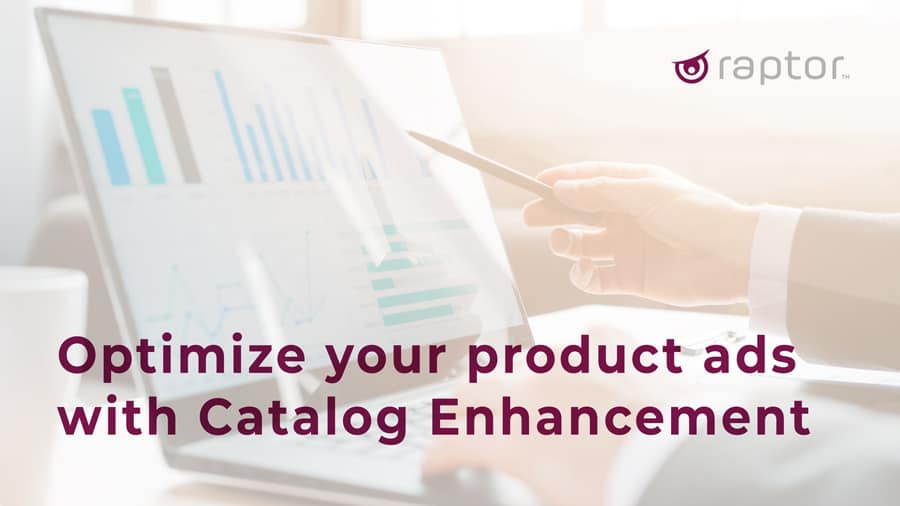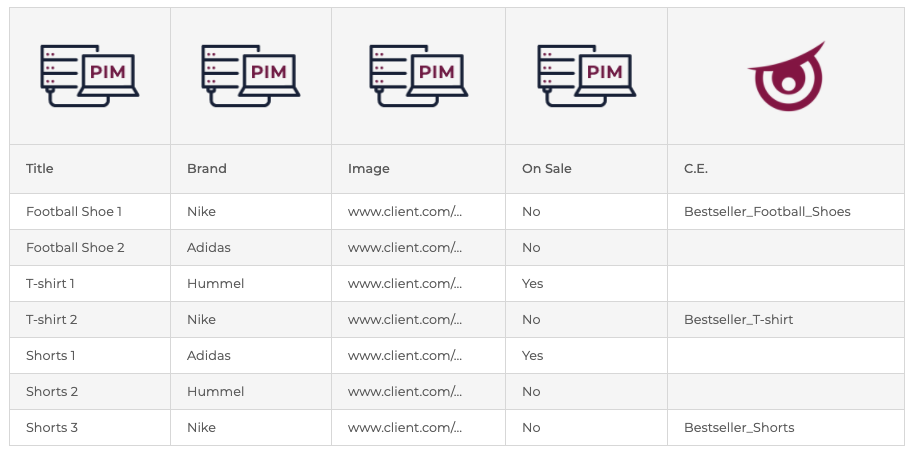Optimize your products with Catalog Enhancement
May 25, 2020 |

Advertisers use a product catalog feed when they need to display products on advertising platforms. It contains information such as product id, title, description, link, availability, and price. These are basic information which a typical product contains and does not add any extra value to your campaigns.
When all companies have almost the same product feed, with the same information, how are you going to stand out and differentiate from your competitors?
If you want to differentiate yourself from your competitors and attract the attention of your target group, you need to add business critic logics to your product catalog feed. When you add parameters such as high-margin, bestseller and revenue–per–visit, you will be able to differentiate yourself from competitors and improve your performance.
Read more: Personalization for banners
What is Catalog Enhancement
With Catalog Enhancement you are adding new product attributes containing business critic logics, to your existing product catalog. What you normally upload to Google, Facebook or Amazon does not allow you to boost on these logics.
The extra product attribute can contain business critic logics such as Revenue Per Visit, Bestsellers or a custom made one. These can be used to nudge for largest RPV, stock availability or a combination for optimization of business goals.
When implementing business critic logics such as Revenue Per Visit, Bestsellers or other custom algorithms into your product ads, you will experience an increase in your performance metrics ROAS, CTR and COV.
Example:
Whenever a user is exposed to a category such as “Football Shoes”, the marketing or e-commerce department has chosen which business critic logic they want to boost within that category.This could be the algorithm “bestsellers”, and the products that are shown are the bestseller in the football shoe’s category.
For another category you can choose the logic “high-margin”, which will then boost the products within the category that have the highest margin.
Another example could be the logic “Revenue Per Visit”, which means that the algorithm will find the product that is based on data from previous purchases that on average have the largest basket size when bought and bid on these.
Why is it important to implement business critic logics?
Better performance and standing out from your competitors, are the two main reasons why you need to incorporate business critic logics to your catalog advertisement.
If you do not have any algorithms that determine which products should be shown, Google will then choose which products to present to the user.
Catalog Enhancement has a lot of different possibilities you can take advantage of to ensure that you achieve your goals.
It is important not to get carried away and solely focus on marketing goals, which often have a huge tunnel vision focus on revenue. However, if you don’t focus on your business goals that ensure that the margin is covered, then it won’t be a profitable way to advertise your products.
Choosing an algorithm like Revenue Per Visit may compromise your margin since it does not take into consideration how high or low the margin is when recommending the best product within the logic Revenue Per Visit, and not the highest margin.
Here, marketers can boost logic relative to each other, which means that if you want the logic revenue per visit to be the determining factor, but you still want the products to have a specific margin, then it is possible to combine these two logics.

You can use logics that vary from bestsellers, revenue per visit and previously viewed items to high-margin, seasonality, clear from stock, etc.
The goal of these logics is to improve performance, which ensures marketing and e-commerce departments achieve their business goals and not just their marketing goals.
Standing out and differentiating from your competitors is very important, as users are exposed to many different products in catalog advertisement (from different companies and brands).
Read more: Optimize your Google Shopping performance
Where can you use it?
Catalog Enhancement can be used wherever you are using a product feed as the source of the products that you want to display. Being able to implement business critic logics in all the channels where you display your products is essential in creating a uniform experience.
Catalog Enhancement in Google
No matter if your setup involves manual bidding, eCPC, or ROAS target, you will be able to use and take advantage of Catalog Enhancement in Google Shopping.
Catalog Enhancement is also available for Google Dynamic Search.
Catalog Enhancement in Facebook
On Facebook, you can connect your best performing audiences with your best-performing products on Facebook.
Whether you are using Collection Ads or Catalog Ads, you can add parameters such as bestsellers, revenue per visit, or a combination for optimization of your business goals.
Utilize the Raptor backend to meet ever-changing business goals and add data points along the way. Highlight your most popular products or the products that you expect to get the best turnover on (or exclude the ones without any expected turnover).
Other possibilities
Catalog Enhancement is compatible with other marketplaces, such as Amazon’s Sponsored Product Ads.
Algorithm tuning
Different parameters can be adjusted and will affect the outcome of which products are enhanced by Raptor. Depending on which business goals you have, and what you want to achieve you will be able to adjust the following parameters to adjust the way Raptor selects products:
Half-life
For how long time do you need your data to count? You can adjust the look-back windows to ensure that you take seasonality into account.
Revenue Per Visit
Boost products that have a high revenue per visit. Products with a high revenue per visit means that it is products’ that the customers often buy with other products, which means that the average basket size is larger than normal.
O-data Filter
Use our O-data filter to highlight products with specific property (e.g. stock availability and profit). You can also use the O-data filter to remove or select specific products that are currently on sale, within a specific category or brand.

Read more: Boosting Google Shopping Results on Luxoliving.dk
How to implement it / 5-Step Wizard
Our 5-step wizard allows you to quickly set up Raptor Catalog Enhancement. This will integrate your feed with Google Ads, which is a prerequisite for using Catalog Enhancement.
If you are interested in knowing how to setup your feed with our Catalog Enhancement, you can click below to read our “How to Guide”.
Key takeaways
A standard product catalog feed is not enough to differentiate yourself from competitors as products and prices are almost the same.
Catalog Enhancement allows you to add parameters to your product catalog feed, which will take your product ads to the next level. You will get the most out of your campaigns by implementing business critic logics such as bestsellers, high-margin or revenue per visit.
Implementing these business critic logics, will both improve your ROAS, CTR, COV and you will be able to achieve your business goals. You can combine this logic and tune them, so you find the right fit between marketing and business goals.
Catalog Enhancement is available for all advertising platforms and marketplaces such as Google, Facebook, and Amazon.
Related Content
You might also like
Let us show you what you can achieve with premium personalization


A Raptor expert can share more about the product and answer any questions you have.

